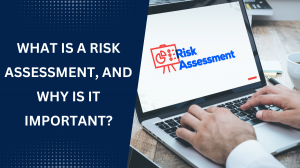Packaging plays a critical role in how products are perceived, preserved, and presented. Behind every high-quality, functional plastic jar is a complex process that ensures consistency, safety, and visual appeal. For brands across industries, collaborating with a professional plastic jar manufacturer can make or break a product launch.
This blog walks you through the complete journey—from initial design to final delivery—of working with a plastic jar manufacturer. Whether you're a startup or a large-scale producer, understanding each step will help you make informed decisions and achieve successful packaging outcomes.
1. Defining Your Packaging Requirements
The process begins with understanding the needs of your product and your brand. Key questions include:
-
What type of product will the jar hold (cosmetics, food, supplements, etc.)?
-
What is the required jar capacity?
-
Are there specific regulatory or safety requirements?
-
What's the desired look and feel?
-
What is the target budget and timeline?
A reliable plastic jar manufacturer will use this information to assess your needs and recommend suitable materials, jar types, and customization options.
2. Material Selection and Guidance
Choosing the right plastic material is essential for product safety, durability, and aesthetics. Common materials include:
-
PET (Polyethylene Terephthalate): Clear, strong, and widely recyclable. Ideal for food, personal care, and beverages.
-
HDPE (High-Density Polyethylene): Opaque, durable, and resistant to chemicals. Used for pharmaceuticals, cleaning supplies, and industrial goods.
-
PP (Polypropylene): Offers good resistance to heat and fatigue. Common in healthcare and food applications.
A reputable plastic jar manufacturer will guide you in choosing the material best suited to your product's characteristics and market.
3. Concept and Custom Design Development
Once the material is selected, it's time to start designing. Custom jars can be developed from scratch or inspired by existing models.
This phase includes:
-
Shape and dimensions
-
Wall thickness and weight
-
Closure compatibility (screw caps, flip lids, child-resistant caps, etc.)
-
Color, texture, and finish options
-
Decorative elements (embossing, labeling, silk screening)
Designers and engineers at the manufacturing facility will create CAD (Computer-Aided Design) models and 3D prototypes to help you visualize and refine the final product.
4. Mold Creation and Tooling
Once the design is approved, a custom mold is created. This tooling step is crucial, as it shapes every jar produced during the manufacturing run.
Depending on complexity, mold fabrication may take several weeks and represent a significant upfront investment. However, the benefit is consistent, precision-made jars that meet exact specifications.
Some plastic jar manufacturer facilities offer rapid prototyping services to shorten lead times and make faster adjustments.
5. Production via Molding Technology
After mold development, mass production begins. Most manufacturers use one of the following methods:
-
Blow Molding: Used for hollow jars and bottles. The plastic is heated, shaped into a parison, and expanded within a mold.
-
Injection Molding: Ideal for thicker, more intricate containers. Molten plastic is injected into a mold cavity and cooled to form the jar.
-
Injection Blow Molding: Combines the benefits of both methods for high-quality, uniform containers.
Production runs can range from a few thousand to millions, depending on your needs.
6. Quality Assurance and Testing
Before packaging and delivery, every batch undergoes strict quality checks. A dependable plastic jar manufacturer ensures:
-
Visual inspections for defects, bubbles, or irregularities
-
Leak testing to ensure airtight sealing
-
Drop tests for durability and impact resistance
-
Volume checks for accurate fill capacity
-
Material safety compliance (e.g., food-grade, BPA-free, FDA compliance)
This stage guarantees the jars meet both performance standards and your branding expectations.
7. Decoration and Branding Options
This is where your packaging truly comes to life. Whether you're using a stock jar or custom design, decoration can make your product stand out. Decoration techniques include:
-
Silkscreen printing
-
Shrink sleeves
-
Hot stamping
-
Embossing or debossing
-
Full-body wraps or digital labeling
The plastic jar manufacturer can also color-match your packaging to your branding palette and ensure finishes (matte, gloss, frosted) align with the product's message.
8. Packaging, Warehousing, and Fulfillment
Once production and decoration are complete, jars are carefully packaged into boxes or pallets. At this stage, manufacturers may offer additional services such as:
-
Warehousing for inventory management
-
Batch coding for traceability
-
Shipping coordination and logistics
-
Just-in-time delivery for streamlined operations
Having a plastic jar manufacturer that offers full-service fulfillment support simplifies your supply chain and reduces operational headaches.
9. Sustainability and Environmental Compliance
Today's consumers and regulators demand eco-conscious business practices. Many manufacturers now integrate sustainable methods such as:
-
Use of recycled materials (PCR)
-
Biodegradable plastic alternatives
-
Energy-efficient machinery
-
Low-waste production processes
-
Recyclable and reusable jar designs
Your manufacturer should provide transparent documentation and options that align with your environmental goals.
10. Ongoing Collaboration and Reordering
Once you've established a relationship, your plastic jar manufacturer becomes an essential part of your product development team. They'll:
-
Maintain molds and tools for future runs
-
Scale production based on your business growth
-
Keep you updated on packaging trends and innovations
-
Offer upgrades and rebranding support when needed
This ongoing partnership ensures packaging continuity, innovation, and business agility.
Key LSI Keywords to Include
To support SEO, incorporate these LSI keywords throughout the content:
custom plastic jar design
plastic container production process
PET and HDPE jar manufacturing
mold development for plastic packaging
decorated plastic jars
packaging prototyping services
quality control in plastic manufacturing
labeling options for jars
plastic packaging logistics
eco-friendly jar solutions
FAQs About Working with a Plastic Jar Manufacturer
Q1. How long does it take to go from concept to finished jars?
A: Depending on the complexity, custom projects can take 6–12 weeks. Stock jar orders are typically fulfilled within 1–3 weeks.
Q2. Do I need to order large quantities?
A: Minimum order quantities vary by manufacturer, but most offer flexible options. Some even accommodate small-batch orders for startups.
Q3. Can I see a sample before full production?
A: Yes. Most plastic jar manufacturer facilities provide samples or prototypes for approval before mass production.
Q4. What decoration options are available?
A: You can choose from screen printing, shrink sleeves, foil stamping, custom labels, and more. These options enhance branding and shelf appeal.
Q5. Are the jars food-safe or compliant with regulations?
A: Reputable manufacturers offer FDA-compliant, BPA-free materials and provide documentation to meet food, cosmetic, and pharmaceutical regulations.
Q6. Can I change the design after the mold is made?
A: Minor modifications may be possible, but significant changes require a new mold. It's best to finalize your design during the prototyping stage.
Q7. Do manufacturers offer help with logistics and shipping?
A: Many do. Full-service manufacturers assist with inventory storage, order fulfillment, and shipping coordination.
Conclusion
From idea to shelf, the process of working with a plastic jar manufacturer involves strategic planning, engineering expertise, and collaborative design. Understanding this end-to-end process empowers your business to make smart decisions, reduce costs, and create packaging that resonates with customers.






